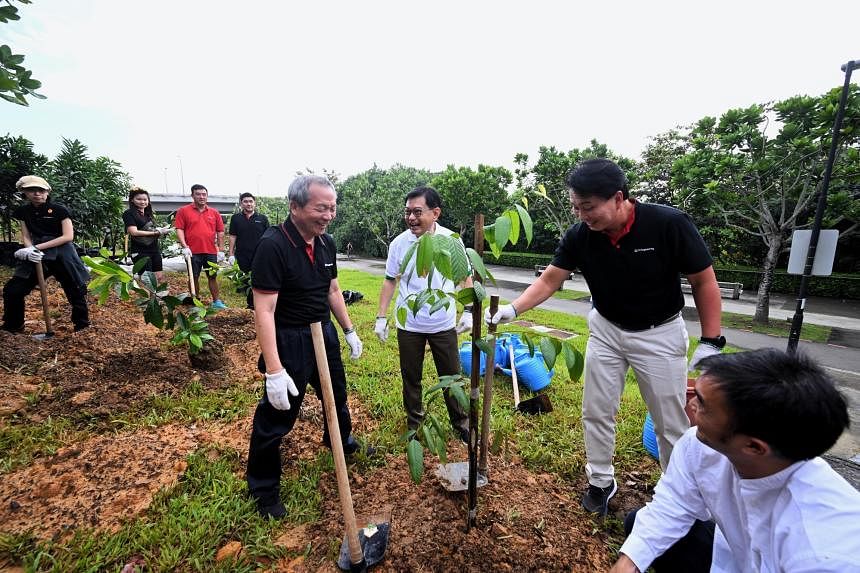SINGAPORE – Experiments on various techniques to grow trees in a densely populated area are being carried out through a ground-up initiative launched by a social enterprise and scientists to support City in Nature.
City in Nature is a national initiative that has restoring nature in the urban landscape as one of its five key strategies.
Temasek Life Sciences Laboratory (TLL), a research lab that is a beneficiary of Temasek Trust and located within the National University of Singapore (NUS), provided some of the 100 seedlings of seven tree species propagated through tissue culture and native tree saplings provided by City Sprouts on a plot of land in Punggol.
The TLL project is part of the “Gaea Forest” programme, an afforestation initiative by landscaping company GWS Living Art and the NUS Centre for Nature-based Climate Solutions (CNCS) to plant 500 trees on 300 sq m of land at the City Sprouts Punggol urban farm.
The 16,827 sq m farm, a social enterprise run by GWS Living Art, sits on land once occupied by the Uncle Ringo Amusement Park, which closed in late 2022.
Dr Somika Bhatnagar, TLL’s head of plant transformation and tissue culture, said: “Because we are planting them close to each other, we want to find out how the trees behave, and how the species interact with each other and grow as a forest and not as a single tree.”
On Thursday morning, one of the TLL seedlings was planted by Deputy Prime Minister Heng Swee Keat at the farm to commemorate ST Engineering’s Green Day.
The global technology, defence and engineering group has pledged $1 million for the planting of trees over the next five years. Besides tree-planting, employees also took part in sustainability-focused workshops and a biodiversity trek on Thursday.
TLL’s two-year research will also study carbon sequestration – how carbon dioxide from the air is absorbed and stored – by the trees, which are native to South-east Asia, and the biodiversity that could result from the afforestation project.
The 100 seedlings were planted using the Miyawaki method, a Japanese afforestation technique where a diverse mix of native trees is grown close together to simulate the layers of a natural forest.
GWS Living Art founder and director Zac Toh, who founded City Sprouts, said: “In Singapore and South-east Asia, there is actually very little research on urban reforestation in small spaces, tight spaces.”
By mid-2024, the initiative aims to measure the amount of carbon sequestered by the 500 trees.
Mr Toh hopes that the Miyawaki method can “help rewild urban spaces so that maintenance costs for landscaping can be reduced, while at the same time we increase biodiversity and carbon sequestration”.

